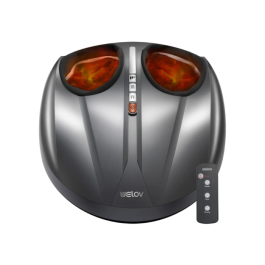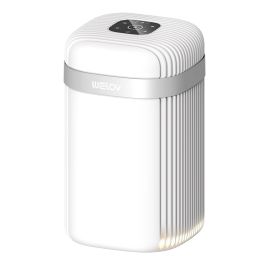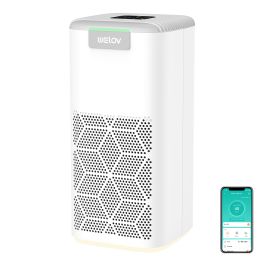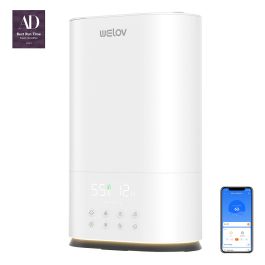Evaporative vs. Ultrasonic Humidifiers: A Comprehensive Comparison
When it comes to maintaining a comfortable and healthy indoor environment, the role of humidifiers cannot be overstated. By regulating the humidity levels within your home, these devices can alleviate a variety of common discomforts, including dry skin, nasal congestion, and static electricity. Among the various types of humidifiers available, evaporative and ultrasonic humidifiers stand out due to their unique technologies and benefits. Understanding the distinctions between these two can help you make an informed decision that best suits your needs.

Evaporative Humidifiers: Natural and Effective Humidification
What is an Evaporative Humidifier?
An evaporative humidifier is one of the most popular types of humidifiers used to improve indoor air quality. These devices operate by utilizing a fan to draw air through a wet filter or wick, effectively mimicking the natural evaporation process. As the air passes through the wet filter, it picks up moisture, which is then dispersed into the surrounding environment, thereby increasing humidity levels.
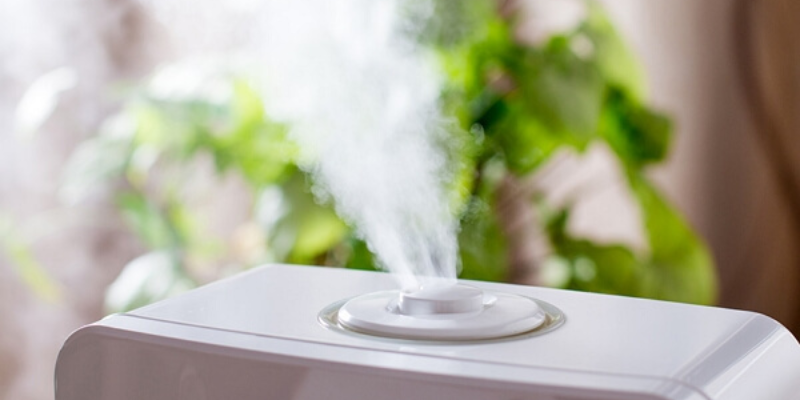
How Does an Evaporative Humidifier Work?
The basic mechanism behind evaporative humidifiers involves three key components:
1. Water Reservoir: Holds the water that will be used for humidification.
2. Wick Filter: Absorbs water from the reservoir and provides a large surface area for evaporation.
3. Fan: Blows air across the wet filter, facilitating the evaporation process.
When the fan is activated, it draws dry air from the room, passes it through the saturated wick filter, and releases humidified air back into the space. This process ensures that the air is evenly moisturized, creating a more comfortable indoor environment.
Benefits of Using an Evaporative Humidifier
Evaporative humidifiers offer several advantages, making them a popular choice for homeowners:
- Cost-Effective: Typically more affordable than other types of humidifiers.
- Energy Efficient: Uses less electricity compared to ultrasonic or steam humidifiers.
- Natural Evaporation: Reduces the risk of over-humidification, as the process relies on the natural capacity of the air to hold moisture.
- Improved Air Quality: Helps reduce allergens and respiratory irritations by maintaining optimal humidity levels.
Ultrasonic Humidifiers: A High-Tech Moisture Solution
What is an Ultrasonic Humidifier?
An ultrasonic humidifier is a highly efficient device designed to improve indoor air quality by adding moisture to the air. Unlike traditional humidifiers, ultrasonic humidifiers utilize high-frequency vibrations to produce a fine mist, similar to the output of a mini fog machine. This innovative technology makes them a popular choice for maintaining optimal humidity levels in homes and offices.
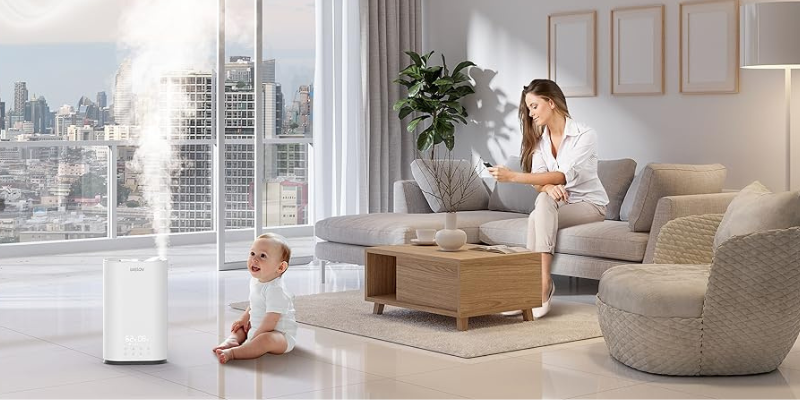
How Does an Ultrasonic Humidifier Work?
The core mechanism of an ultrasonic humidifier involves a small metal plate or diaphragm that vibrates at an ultrasonic frequency. Here's a breakdown of the process:
1. Water Reservoir: The humidifier's tank holds the water that will be converted into mist.
2. Ultrasonic Vibrations: The metal plate or diaphragm vibrates at a high frequency, typically above the range of human hearing.
3. Fine Mist Production: These vibrations break the water into microscopic particles, creating a fine mist that is released into the air.
This fine mist quickly evaporates, increasing the humidity levels in the room and providing a comfortable and healthy environment.
Benefits of Using an Ultrasonic Humidifier
Ultrasonic humidifiers offer several advantages, making them a preferred choice for many households:
- Whisper-Quiet Operation: Ideal for bedrooms, nurseries, and offices, as they operate almost silently.
- Energy Efficient: Consumes less electricity compared to steam or warm mist humidifiers.
- Cool Mist Option: Provides a refreshing cool mist, beneficial during warmer months.
- No Heat: Eliminates the risk of burns, making it safe for use around children and pets.
Maintenance Tips for Ultrasonic Humidifiers
To ensure optimal performance and longevity of your ultrasonic humidifier, regular maintenance is crucial:
- Daily Cleaning: Empty and rinse the water tank daily to prevent bacterial growth.
- Weekly Cleaning: Use a mixture of water and white vinegar to clean the tank and ultrasonic plate, removing any mineral deposits.
- Use Distilled Water: Using distilled or demineralized water can prevent white dust and extend the lifespan of the device.
- Filter Replacement: If your model includes a filter, replace it as recommended by the manufacturer.
Key Differences Between Evaporative and Ultrasonic Humidifiers
Evaporative and ultrasonic humidifiers are two common types of devices used to add moisture to indoor air. When deciding between an ultrasonic and an evaporative humidifier, consider the following factors:
Mechanism: Ultrasonic humidifiers use high-frequency vibrations to create a fine mist of water droplets that are dispersed into the air. Evaporative humidifiers, on the other hand, use a fan to blow air over a wet wick or filter, causing the water to evaporate naturally into the air.
Noise Level: Ultrasonic humidifiers are generally quieter than evaporative humidifiers. The ultrasonic technology produces minimal noise, while evaporative models have fans that create some sound.
Maintenance: Evaporative humidifiers require regular filter replacements, typically every 1 to 3 months. Ultrasonic humidifiers don't use filters, which can save on maintenance costs and effort.
Air Quality: Ultrasonic humidifiers can potentially disperse minerals and contaminants into the air if the water used is not properly treated. Evaporative humidifiers naturally filter out these impurities as the water evaporates, potentially improving air quality.
Energy Efficiency: Ultrasonic humidifiers are generally more energy-efficient as they don't use heat or fans. Evaporative humidifiers use fans, which consume more energy.
Cost: Evaporative humidifiers tend to be less expensive upfront than ultrasonic models, although the price difference has decreased over time. However, the ongoing cost of filter replacements for evaporative models should be considered.
Size and Design: Ultrasonic humidifiers can be made more compact and are often considered more aesthetically pleasing. Evaporative humidifiers are typically bulkier due to the fan and filter components.
Humidity Control: Evaporative humidifiers are self-regulating and less likely to over-humidify a room. Ultrasonic humidifiers can add moisture very quickly and may require a humidistat to prevent over-humidification.
Recommend Humidifier for Home - WELOV H500 Pro BoostMist Cool Mist Humidifier
The WELOV H500 Pro BoostMist Cool Mist Humidifier is more than just a humidifier; it's a revolutionary solution designed to bring unparalleled comfort and convenience to your home. Perfect for large rooms, this versatile and efficient humidifier ensures that your living space maintains optimal humidity levels, enhancing your well-being and comfort.
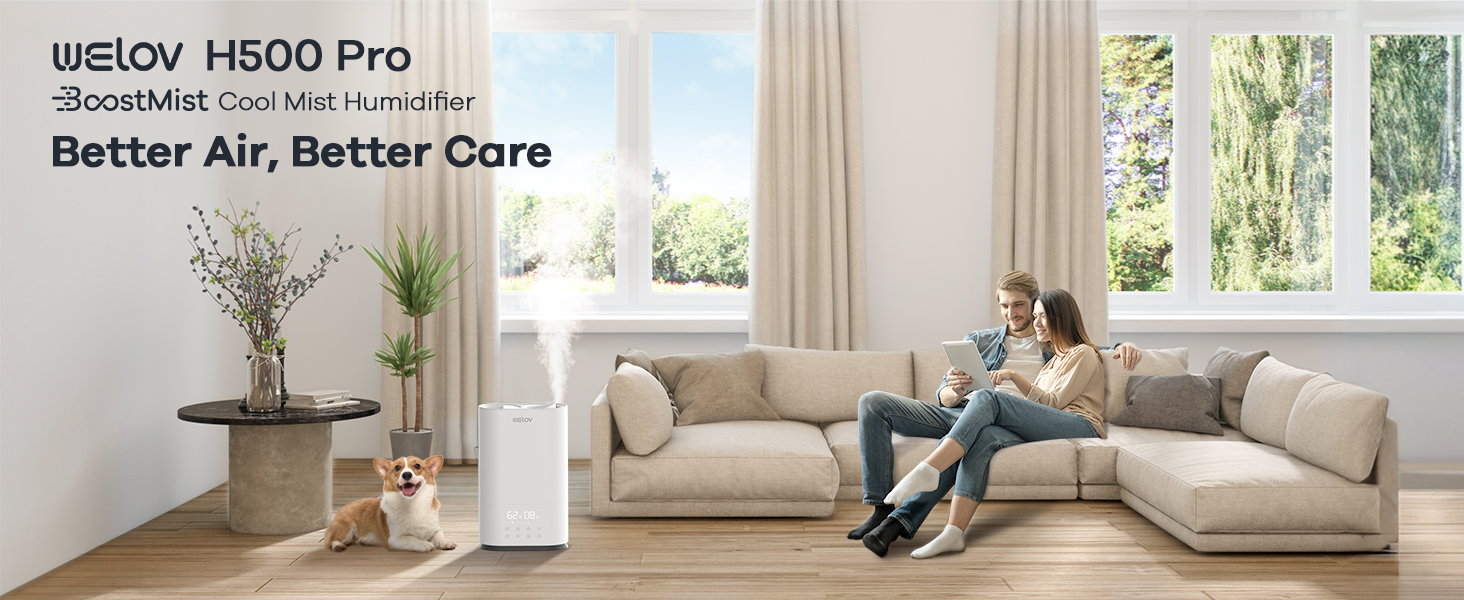
Key Features of WELOV BoostMist Cool Mist Humidifier:
BoostMist Technology: Experience rapid humidification like never before. With a mist output of up to 550ml/h, the BoostMist Technology increases room humidity by 20% in just 10 minutes, transforming your environment into a soothing oasis.
Auto Humidity Monitoring: The built-in humidistat takes the guesswork out of maintaining the perfect humidity level. Real-time monitoring and automatic adjustments ensure your home is always comfortable, with the added peace of mind of an auto shut-down feature when water levels are low.
Long Runtime: Enjoy continuous comfort with a 6L tank that supports up to 90 hours of operation, making it ideal for large areas up to 753 sq. ft. Say goodbye to frequent refills and hello to long-lasting humidity.
Quiet Operation: Designed with your serenity in mind, this humidifier operates quietly, making it perfect for bedrooms and nurseries. Enjoy a restful night’s sleep or peaceful relaxation without the distraction of noise.
Adjustable Night Light: Create a calming ambiance with the adjustable night light. With eye-protecting brightness levels, it's perfect for children’s rooms, ensuring a gentle glow that won't disrupt sleep.
Smart Control: Take control of your comfort with the convenience of smart technology. Whether via the app, voice commands, or touch panel, you can easily adjust settings to suit your needs, offering unparalleled flexibility and ease.
Usage and Maintenance fo WELOV H500 Pro BoostMist Humidifier:
Water Type: For the best performance, use distilled or demineralized water to prevent the dispersion of minerals and contaminants, ensuring clean and pure mist for your home.
Cleaning: Keep your humidifier in top condition with regular cleaning. Daily maintenance helps prevent mold and bacteria growth, while a thorough weekly sanitization keeps it running smoothly and efficiently.
Embrace a new level of comfort and convenience with the WELOV H500 Pro BoostMist Cool Mist Humidifier. This advanced humidifier isn't just an appliance; it's a lifestyle upgrade, bringing you and your loved ones the gift of perfect air quality and a healthier home environment.
Conclusion
Deciding between ultrasonic and evaporative humidifiers involves considering factors like noise level, maintenance, cost, energy consumption, area coverage, and specific health concerns. By understanding these differences, you can select the humidifier that best fits your lifestyle, ensuring comfortable and healthy indoor air quality.
FAQs About Humidifiers
Q1. What is the ideal indoor humidity level?
The recommended indoor humidity level is between 30% and 50%.
Q2. How often should I clean my humidifier?
It is advisable to clean your humidifier at least once a week, but always refer to the manufacturer's instructions.
Q3. Can humidifiers help with allergies?
Yes, maintaining optimal humidity can help alleviate allergy symptoms by keeping air passages moist and reducing airborne dust.















